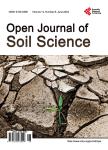How Did Vinh Moc Village, Located near Vietnam DMZ, Protect Their Villagers from United States Air Force Bombardment during the Vietnam War?
How Did Vinh Moc Village, Located near Vietnam DMZ, Protect Their Villagers from United States Air Force Bombardment during the Vietnam War?作者机构:College of Agricultural Consumer and Environmental Sciences University of Illinois Urbana USA
出 版 物:《Open Journal of Soil Science》 (土壤科学期刊(英文))
年 卷 期:2023年第13卷第1期
页 面:1-27页
学科分类:07[理学] 070202[理学-粒子物理与原子核物理] 0702[理学-物理学]
主 题:Vinh Moc Village South China Sea Shoreline Con Co Island Bombing Huang Tri Province Soil Tunnels Ground Penetrating Bombs Cu Chi Soil Tunnels
摘 要:The buried village is Vinh Moc where more than 1200 Vietnamese, including soldiers, who lived underground during the Vietnam War (1965 to 1972) were hand dug into red basalt bedrock. The Vinh Moc Village was strategically located on the border of North Vietnam and South Vietnam approximately 14 km north of the DMZ and along the shoreline of the South China Sea. During the Vietnam War, the US Air Force heavily bombed Vinh Moc. The North Vietnamese Army (NVA) had an important military base on nearby Con Co Island. Brave civil volunteers from Vinh Moc would make the 28 km dangerous journey to the island, disguised as fishermen, to deliver supplies to the soldiers stationed there. The people who remained at Vinh Moc dug tunnels into red basalt hills in order to survive this onslaught. The American forces assessed the villagers of Vinh Moc were supplying food and armaments to the NVA garrison on the island of Con Co, which was in turn hindering the American bombers on their way to bomb Hanoi. The US military objective was to force the villagers of Vinh Moc to leave the area. The villagers initially dug the tunnels to a 10 m depth but the American forces designed bombs that burrowed down 10 m before exploding. The soil tunnels were then deepened to 30 m to provide safety for the soldiers and civilians working there during the intense US Air Force bombing. The primary objective of the research study was to determine how the soils and parent material of Vinh Moc Village, protected their villagers from the United States Air Force bombardment during the Vietnam War. In addition, the natural parent material at both the Vinh Moc and Cu Chi were assessed to determine why the tunnels were so resilient. The Cu Chi and Iron Triangle soil tunnels were dug by hand in the Old Alluvium soils and parent material where iron in solution precipitated and became the soil binding material. The Vinh Moc tunnels were hand dug in porous, red basalt (bedrock) hills where the consolidated rock st



